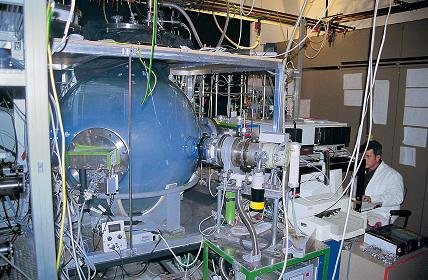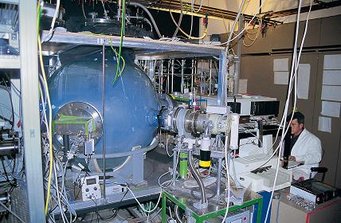Beginning of a Realignment – Atmospheric Chemistry
Station 9
The 1960s were a difficult time for the MPI for Chemistry. The Institute was faced with the impossible task of choosing between a future in cosmochemistry, nuclear physics or inorganic chemistry. A few potential successors to head scientific departments declined the posts, and there was serious discussion about dissolving the Institute in 1967.
The appointment of meteorologist Christian Junge to the Department of Atmospheric Chemistry in 1968 gave the Institute an entirely new research field. In parallel with nuclear physics and nuclear chemistry, early questions in the field of environmental sciences were addressed. Today’s Department of Atmospheric Chemistry arose from research that Junge brought to Mainz.
While Junge concentrated on the properties and dispersion of atmospheric aerosols, his successor Paul Crutzen combined measu-rements with modelling of chemical processes in the troposphere from 1980 onwards. With the explanation of how the ozone hole developed and under Crutzen’s guidance, the focus of the Institute’s interests moved to ozonolysis - the reaction of ozone with carbohydrates. Today the department under Jos Lelieveld concentrates on the photo-oxidation mechanisms involved in the self-cleaning process of the atmosphere.
Find out more about Atmospheric Chemistry and Christian Junge in the following article by Prof. Dr. Ruprecht Jaenicke "The invention of Air Chemistry – Christian Junge".
Ozone experiments behind glass
Exhibit 9: Glass sphere

Until 2010, the glass sphere served as a massive reaction vessel in the Department of Atmospheric Chemistry. Inside, experiments with gases such as ozone could be conducted under controlled conditions, and the chemical reactions could be tracked using measuring instruments attached to the openings. The 500-liter sphere was designed in the 1990s by Osamu Horie in the Moortgat working group at the Institute and manufactured by the company Schott in Mainz. Many measuring and control devices were produced in the Institute’s workshops.
In the early years, researchers studied gaseous substances formed during ozone photolysis – the reaction of ozone with hydrocarbons. The focus was on atmospheric terpenes, which are hydrocarbons released into the atmosphere by plants. The instrument was used to determine the role of Criegee intermediates in the ozone photolysis of atmospheric terpenes.
The measuring instruments included an infrared absorption spectroscope, a liquid chromatograph, and an ion chromatograph. To determine the number, size, and chemical composition of the aerosol particles formed during ozone photolysis, a mass spectrometer was added to the setup.
Today, larger Teflon apparatuses are often used for aerosol studies. The sphere was therefore dismantled and reinstalled as an educational exhibit in the Institute’s new building.
